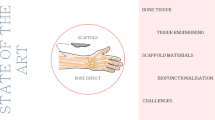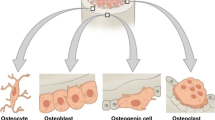Abstract
Borate bioactive glass-based composites have been attracting interest recently as an osteoconductive carrier material for local antibiotic delivery. In the present study, composites composed of borate bioactive glass particles bonded with a chitosan matrix were prepared and evaluated in vitro as a carrier for gentamicin sulfate. The bioactivity, degradation, drug release profile, and compressive strength of the composite carrier system were studied as a function of immersion time in phosphate-buffered saline at 37 °C. The cytocompatibility of the gentamicin sulfate-loaded composite carrier was evaluated using assays of cell proliferation and alkaline phosphatase activity of osteogenic MC3T3-E1 cells. Sustained release of gentamicin sulfate occurred over ~28 days in PBS, while the bioactive glass converted continuously to hydroxyapatite. The compressive strength of the composite loaded with gentamicin sulfate decreased from the as-fabricated value of 24 ± 3 MPa to ~8 MPa after immersion for 14 days in PBS. Extracts of the soluble ionic products of the borate glass/chitosan composites enhanced the proliferation and alkaline phosphatase activity of MC3T3-E1 cells. These results indicate that the gentamicin sulfate-loaded composite composed of chitosan-bonded borate bioactive glass particles could be useful clinically as an osteoconductive carrier material for treating bone infection.











Similar content being viewed by others
References
Xie ZP, Liu X, Huang WH, et al. Treatment of osteomyelitis and repair of bone defect by degradable bioactive borate. J Controlled Release. 2009;139:118–26.
Bucholz HW, Heinet K, Foerster GW. Infected prostheses: the role of antibiotic cement. In: D’Ambrosia RD, Marier RL, editors. Orthopaedic infections. New Jersey: Slack Inc; 1989. p. 477–88.
Zhao L, Yan X, Yu C, et al. Mesoporous bioactive glasses for controlled drug release. Microporous Mesoporous Mater. 2008;109:210–5.
Xue JM, Shi M. PLGA/Mesoporous silica hybrid structure for controlled drug release. J Controlled Release. 2004;98:209–17.
Xia W, Chang J. Well-ordered mesoporous bioactive glasses (MBG): a promising bioactive drug delivery system. J Controlled Release. 2006;110:522–30.
Jain AK, Panchagnula R. Skeletal drug delivery systems. Int J Pharm. 2000;206:1–12.
Lee CH, Singla A, Lee Y. Biomedical applications of collagen. Int J Pharm. 2001;221:1–22.
Saito K, Hoshino T. Apatite-coated solid composition. US Patent 6344209, 2002.
Liu X, Xie ZP, Huang WH, et al. Bioactive borate glass scaffolds: in vitro and in vivo evaluation for use as a drug delivery system in the treatment of bone infection. J Mater Sci Mater Med. 2010;21:575–82.
Zhang X, Jia WJ, Huang WH, et al. Teicoplanin-loaded borate bioactive glass implants for treating chronic bone infection in a rabbit tibia osteomyelitis model. Biomaterials. 2010;31(22):5865–74.
Rahaman MN, Day DE, Fu Q, et al. Bioactive glass in tissue engineering. Acta Biomater. 2011;7:2355–73.
Fu Q, Saiz E, Rahaman MN, et al. Bioactive glass scaffolds for bone tissue engineering: state of the art and future perspectives. Mater Sci Eng C. 2011;31:1245–56.
Rahaman MN, Brown RF, Day DE, et al. Bioactive glasses for non-bearing applications in total joint replacement. Semin Arthroplasty. 2007;17:102–12.
Liang W, Rahaman MN, Day DE, et al. Bioactive borate glass scaffold for bone tissue engineering. J Non-Cryst Solids. 2008;354:1690–6.
Huang TS, Rahaman MN, Day ED, et al. Porous and strong bioactive glass (13–93) scaffolds fabricated by freeze extrusion technique. Mater Sci Eng C. 2011;31:1482–9.
Domingues ZR, Cortés ME, Gomes TA, et al. Bioactive glass as a drug delivery system of tetracycline and tetracycline associated with β-cyclodextrin. Biomaterials. 2004;25:327–33.
Jia WT, Zhang X, Huang WH, et al. Novel borate glass chitosan composite as a delivery vehicle for teicoplanin in the treatment of chronic osteomyelitis. Acta Biomater. 2010;6:812–9.
Yao AH, Wang D, Huang WH, et al. In vitro bioactive characteristics of borate-based glasses with controllable degradation behavior. J Am Ceram Soc. 2007;90(1):303–6.
Liu X, Huang WH, Fu HL, et al. Bioactive borosilicate glass scaffolds: in vitro degradation and bioactivity behaviors. J Mater Sci Mater Med. 2009;20:1237–43.
Brown RF, Day DE, Rahaman MN, et al. Growth and differentiation of osteoblastic cells on 13–93 bioactive glass fibers and scaffolds. Acta Biomater. 2008;4:387–96.
Huang WH, Rahaman MN, Day DE, et al. Mechanisms for converting bioactive silicate, borate, and borosilicate glasses to hydroxyapatite in dilute phosphate solutions. Phys Chem Glasses. 2006;47(6):647–58.
Huang WH, Day DE, Rahaman MN, et al. Kinetics and mechanisms of the conversion of silicate (45S5), borate, and borosilicate glasses to hydroxyapatite in dilute phosphate solutions. J Mater Sci Mater Med. 2006;17:583–96.
Fu Q, Rahaman MN, Fu HL, et al. Silicate, borosilicate, and borate bioactive glass scaffolds with controllable degradation rate for bone tissue engineering applications. I. Preparation and in vitro degradation. J Biomed Mater Res Part A. 2011;95(1):164–71.
Fu Q, Rahaman MN, Bal BS, et al. Silicate, borosilicate, and borate bioactive glass scaffolds with controllable degradation rate for bone tissue engineering applications. II. In vitro and in vivo biological evaluation. J Biomed Mater Res Part A. 2011;95(1):172–9.
Majeti NV, Ravi K. A review of chitin and chitosan applications. React Funct Polym. 2000;46:1–27.
Frutos P, Diez-Peña E, Frutos G, et al. Release of gentamicin sulphate from a modified commercial bone cement. Effect of (2-hydroxyethyl methacrylate) comonomer and poly(N-vinyl-2-pyrrolidone) additive on release mechanism and kinetics. Biomaterials. 2002;23:3787–97.
Clarot I, Chaimbault P, Hasdenteufel F, et al. Determination of gentamicin sulfate and related compounds by high-performance liquid chromatography with evaporative light scattering detection. J Chromatogr A. 2004;1031:281–7.
Lowy FD. Staphylococcus aureus infections. N Engl J Med. 1998;339:520–32.
Boyle VJ, Fancher ME. Ross Jr R W. Rapid, modified Kirby-Bauer susceptibility test with single, high-concentration antimicrobial disks. Antimicrob Agents Chemother. 1973;3:418–24.
Ning J, Wang DP, Huang WH, et al. Preparation of borosilicate glass and their bioactivity and biodegradation in vitro. J Chin Ceram Soc. 2006;34(11):1326–30.
Zhang X, Fu HL, Huang WH, et al. In vitro bioactivity and cytocompatibility of porous scaffolds of bioactive borosilicate glasses. Chin Sci Bull. 2009;54(24):463–8.
Maeda H, Ishida EH, Kasuga T. Hydrothermal preparation of tobermorite incorporating phosphate species. Mater Lett. 2012;68:382–4.
Kokubo T, Kim HM, Kawashita M. Novel bioactive materials with different mechanical properties. Biomaterials. 2003;24:2161–75.
Goldstein SA. The mechanical properties of trabecular bone: dependence on anatomic location and function. J Biomech. 1987;20:1055–61.
Doadrio JC, Arcos D, Vallet-Regí M, et al. Calcium sulphate-based cements containing cephalexin. Biomaterials. 2004;25:2629–35.
Phaechamud T, Charoenteeraboon J. Antibacterial activity and drug release of chitosan sponge containing doxycycline hyclate. AAPS Pharm Sci Tech. 2008;9:829–35.
Zhang Y, Zhang M. Calcium phosphate/chitosan composite scaffolds for controlled in vitro antibiotic drug release. J Biomed Mater Res. 2002;62:378–86.
Hunt CD. One possible role of dietary boron in higher animals and humans. Biol Trace Elem Res. 1998;66:205–25.
Ying X, Cheng S, Peng L, et al. Effect of boron on osteogenic differentiation of human bone marrow stromal cells. Biol Trace Elem Res. 2011;144:306–15.
Devirian TA, Volpe SL. The physiological effects of dietary boron. Crit Rev Food Sci Nutr. 2003;43(2):219–31.
Brown RF, Rahaman MN, Huang WH, et al. Effect of to borate glass composition on its conversion hydroxyapatite and on the proliferation of MC3T3-E1 cells. J Biomed Mater Res Part A. 2008;88:392–400.
Benderdour M, Bui-Van T, Dicko A, et al. In vivo and vitro effects of boron and boronated compounds. J Trace Elem Med Biol. 1998;12(1):2–7.
Murray FJ. A human health risk assessment of boron (boric acid and borax) in drinking water, biochemical and physiologic consequences of boron deprivation in humans. Regul Toxicol Pharmacol. 1995;22:221–30.
Forrest HN. Boron in human and animal nutrition. Plant Soil. 1997;193:199–208.
Murray FJ. A comparative review of the pharmacokinetics of boric acid in rodents and humans. Biol Trace Elem Res. 1998;66:331–9.
Acknowledgments
This work was supported by the National Natural Science Foundation of China through the Projects 51072133, 81000788, 81201377 and by the Shanghai Science Committee through the project 12JC1408500.
Author information
Authors and Affiliations
Corresponding author
Rights and permissions
About this article
Cite this article
Cui, X., Gu, Y., Li, L. et al. In vitro bioactivity, cytocompatibility, and antibiotic release profile of gentamicin sulfate-loaded borate bioactive glass/chitosan composites. J Mater Sci: Mater Med 24, 2391–2403 (2013). https://doi.org/10.1007/s10856-013-4996-0
Received:
Accepted:
Published:
Issue Date:
DOI: https://doi.org/10.1007/s10856-013-4996-0




